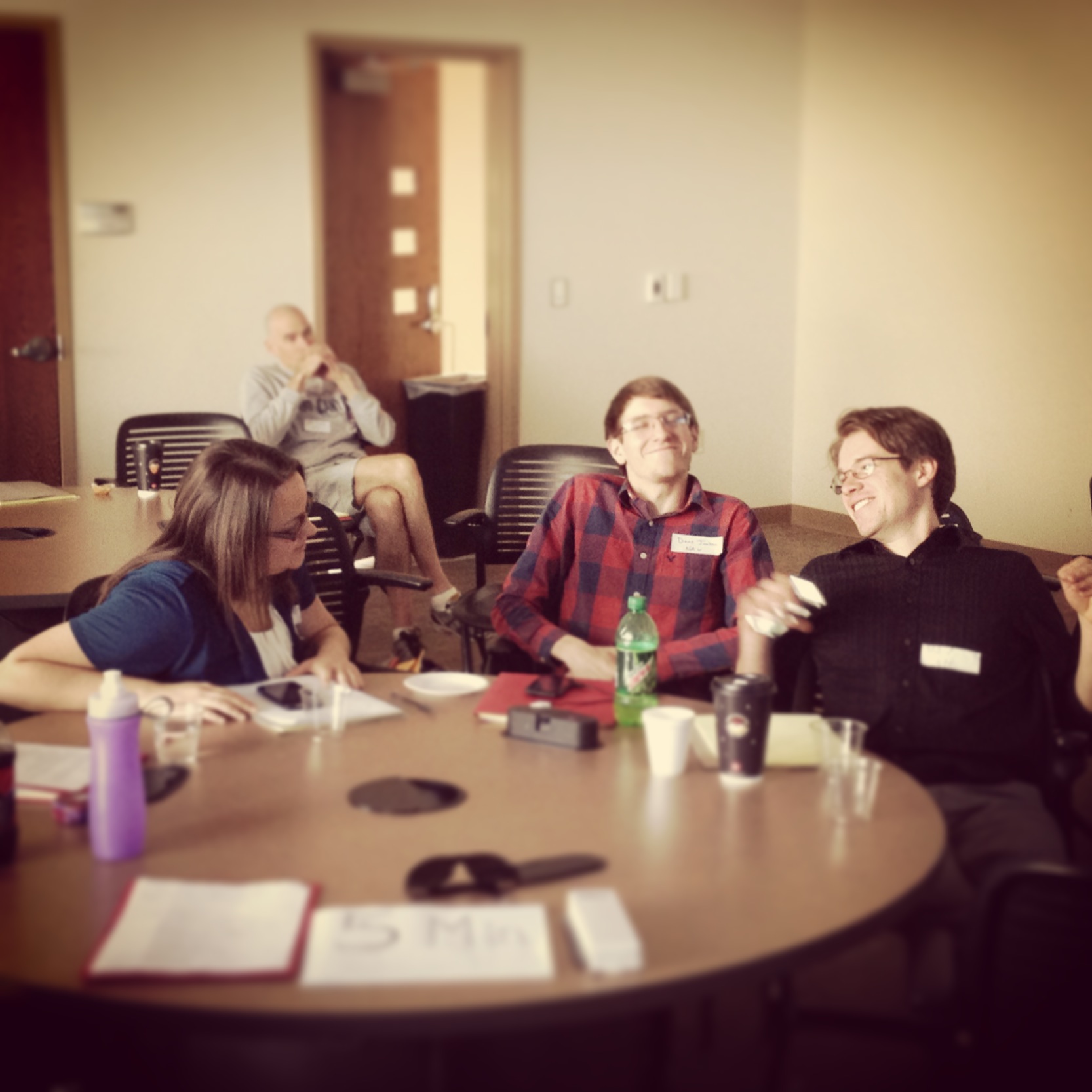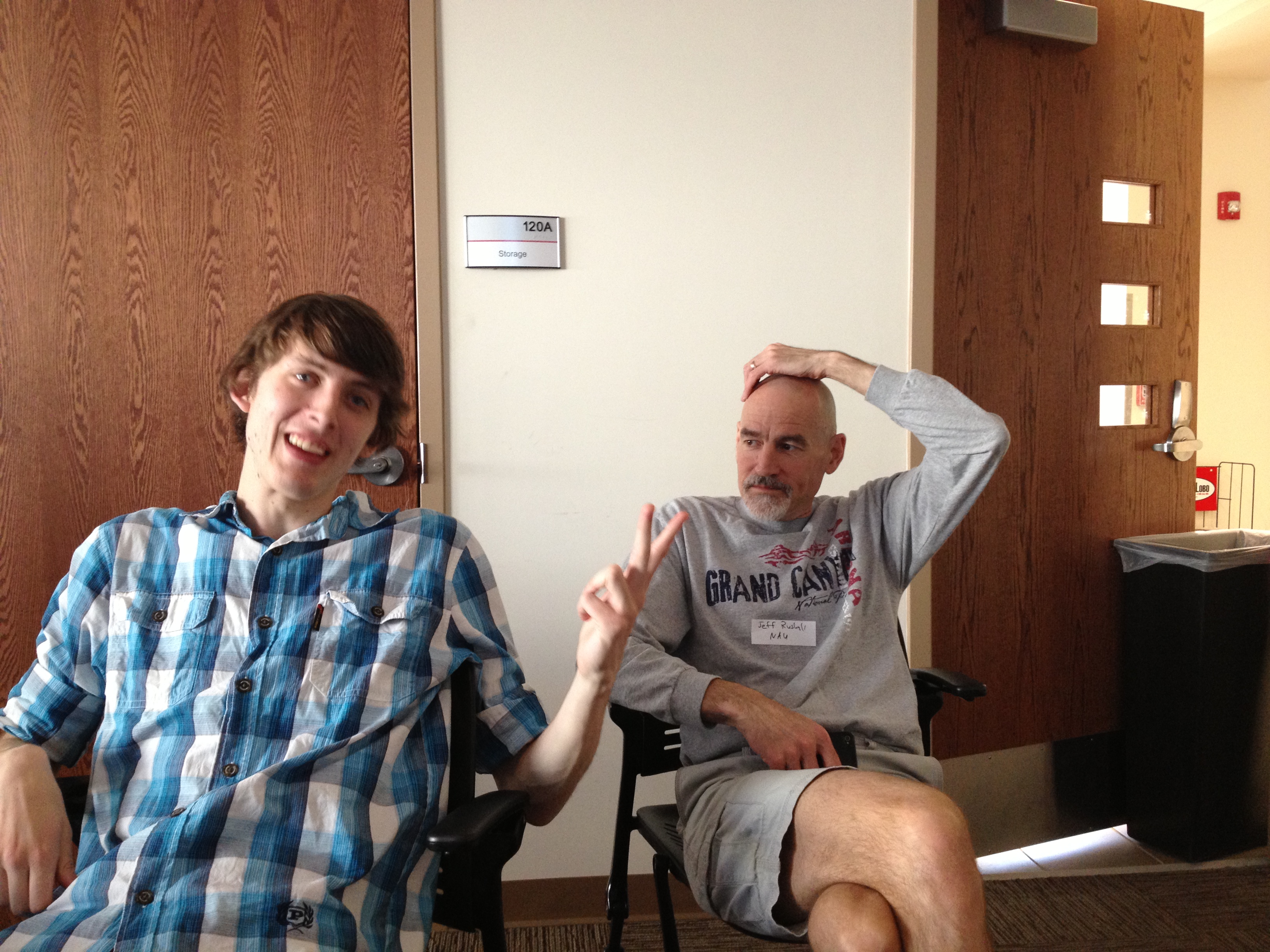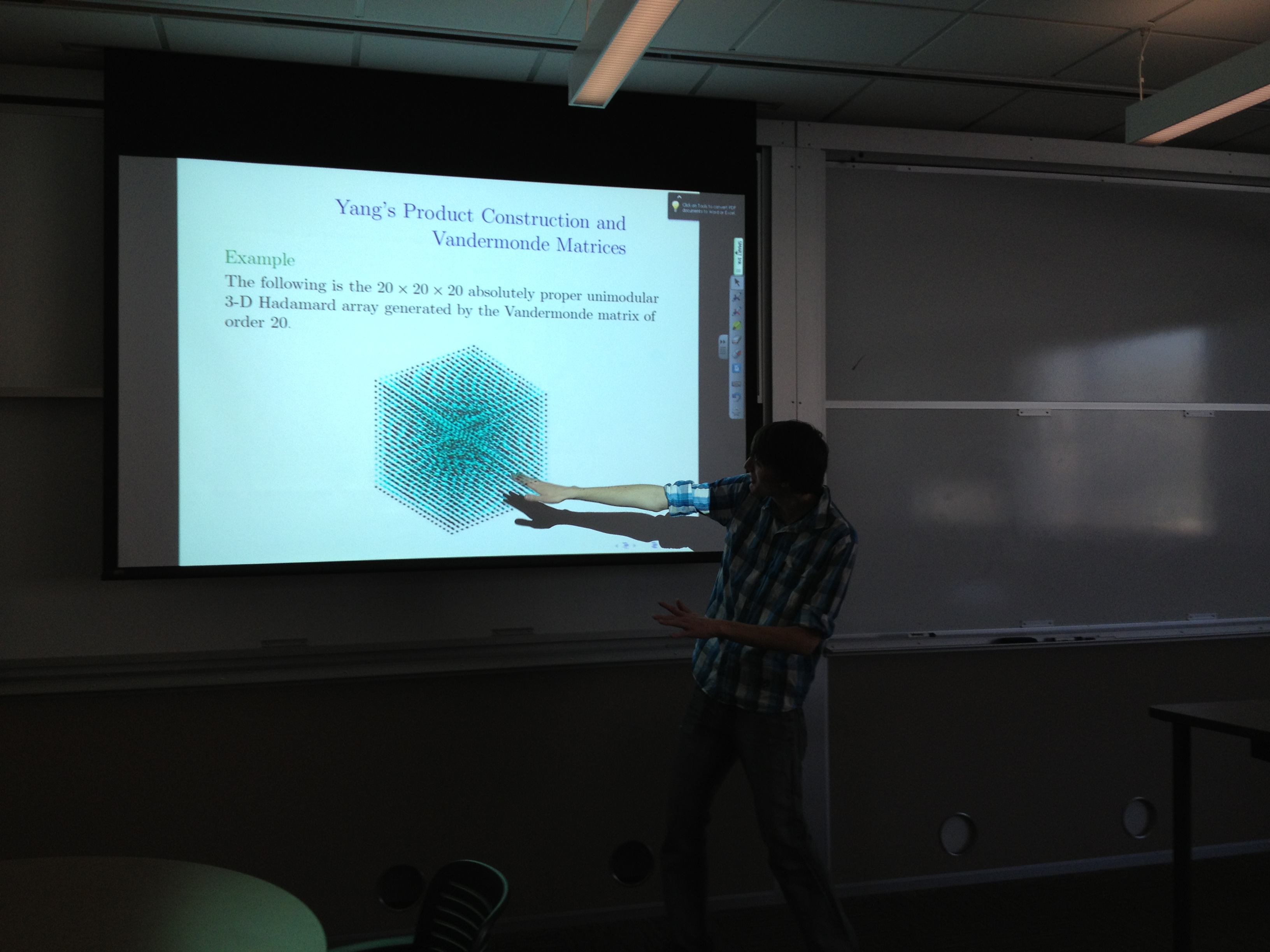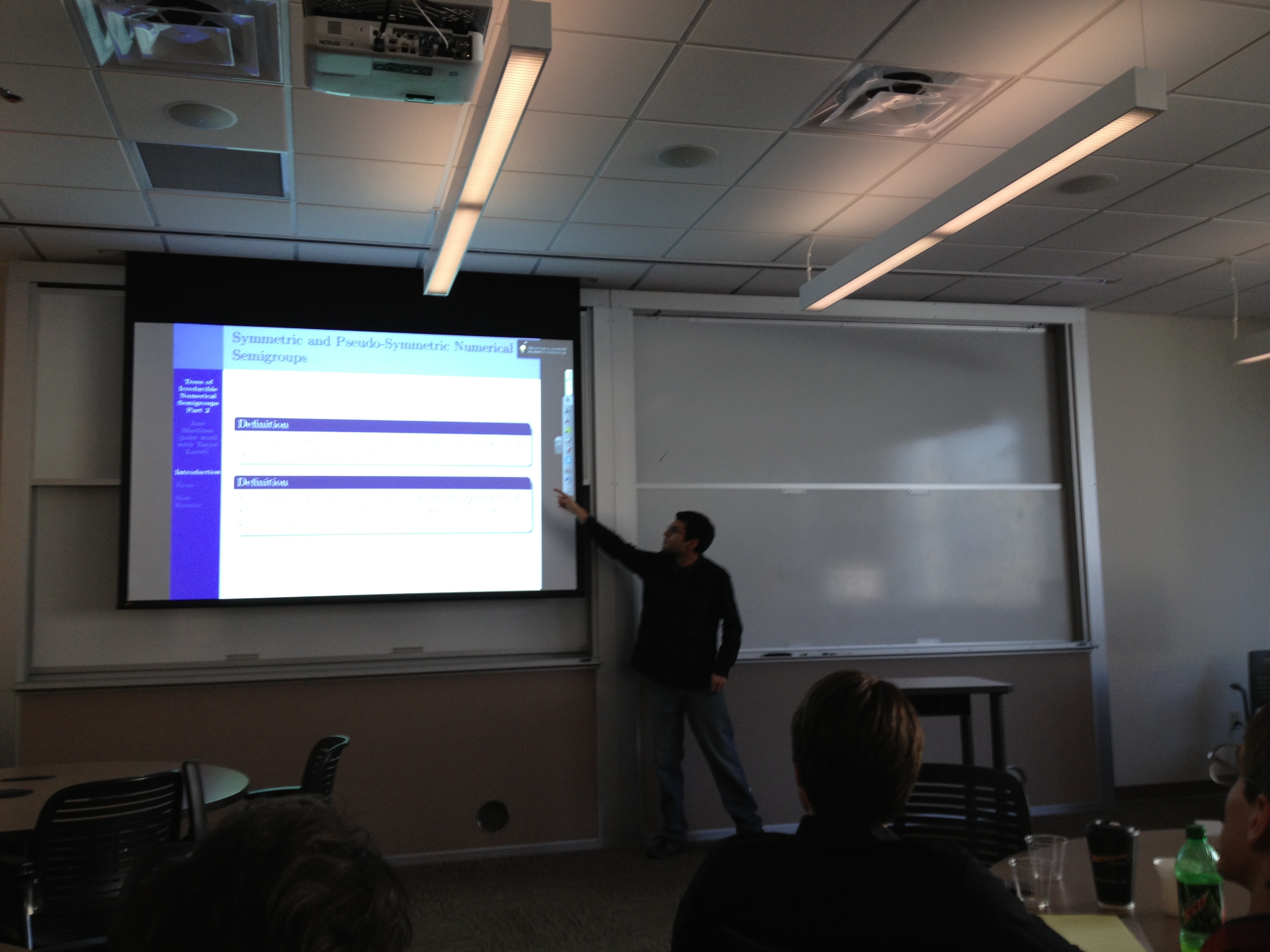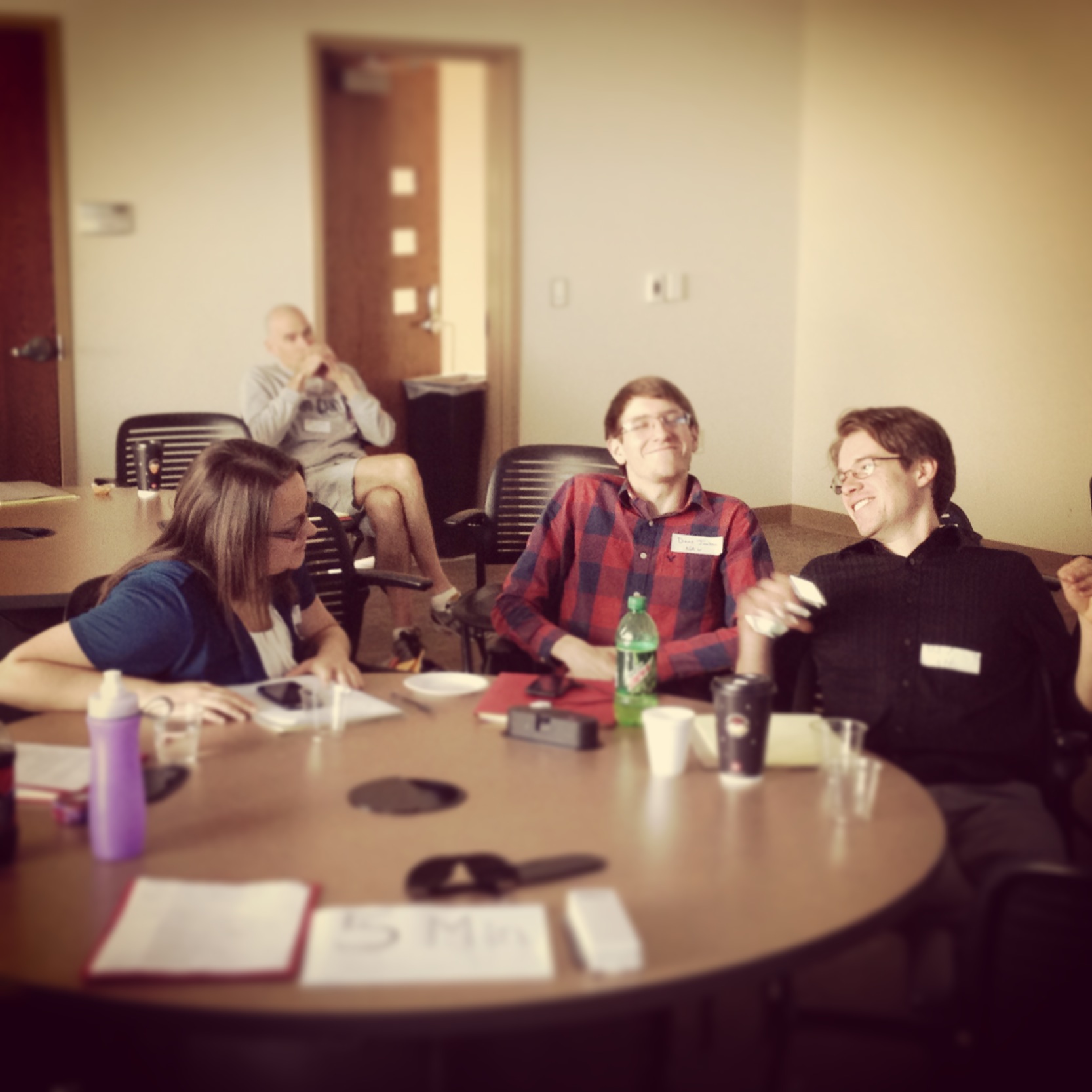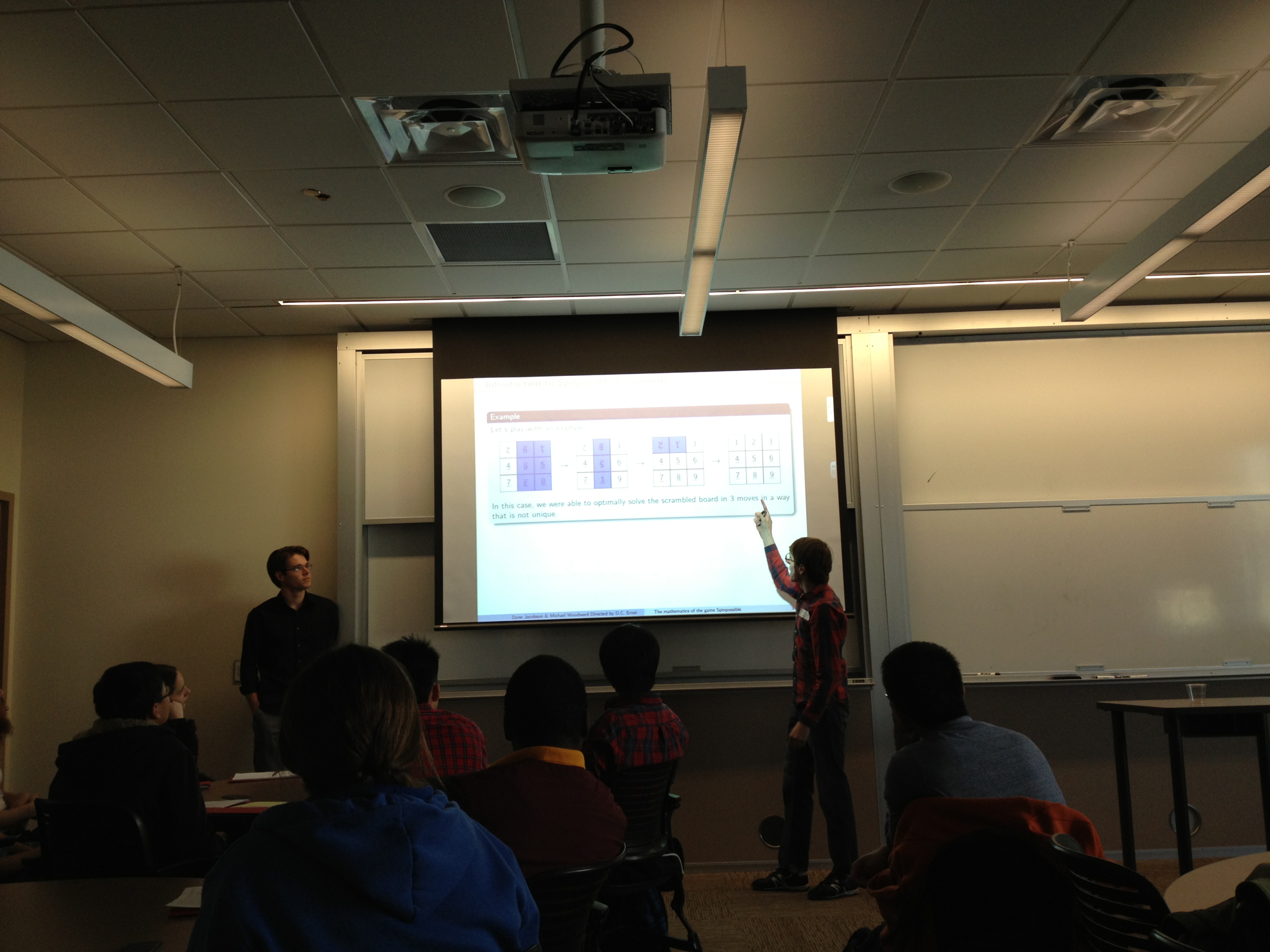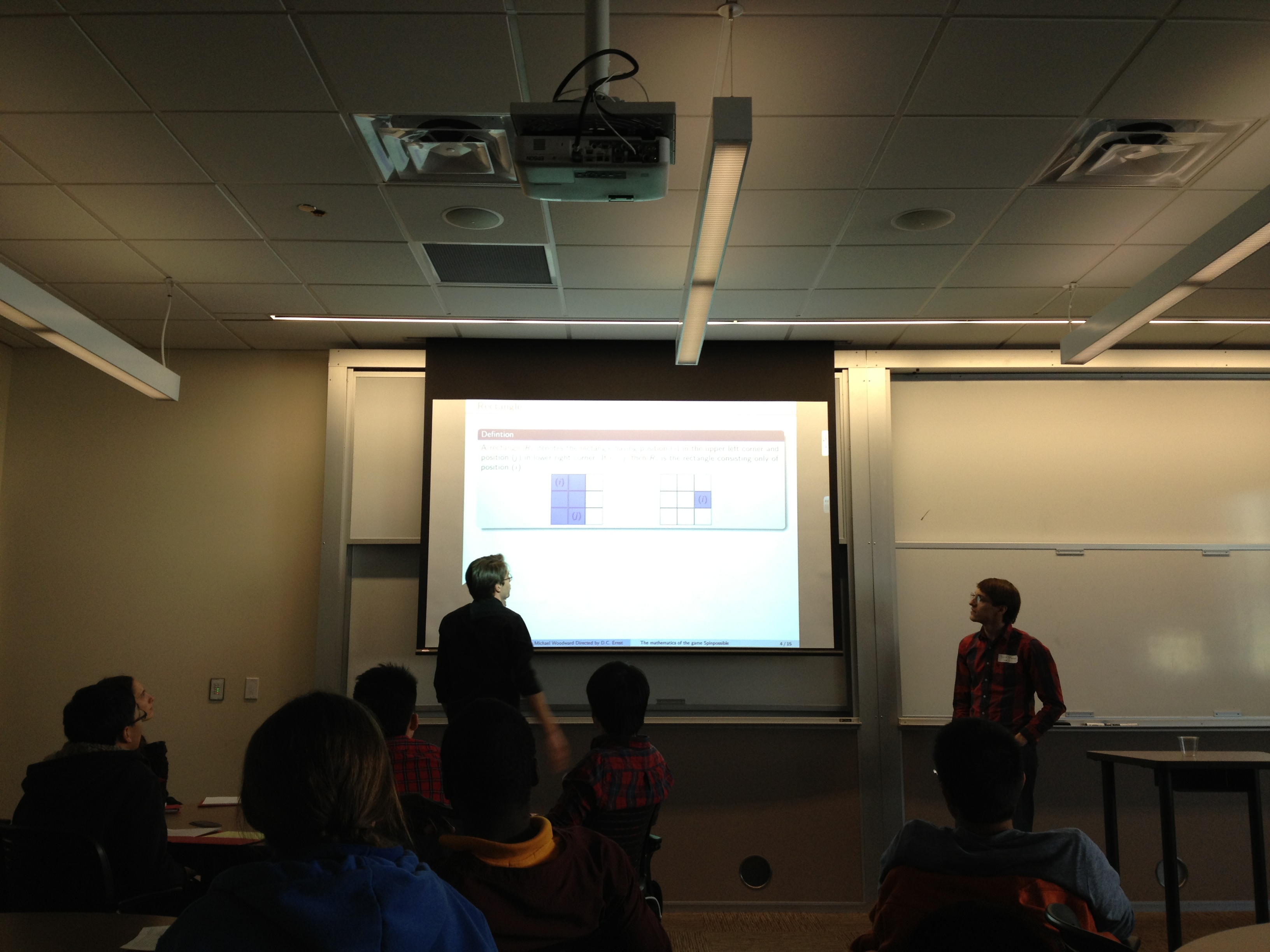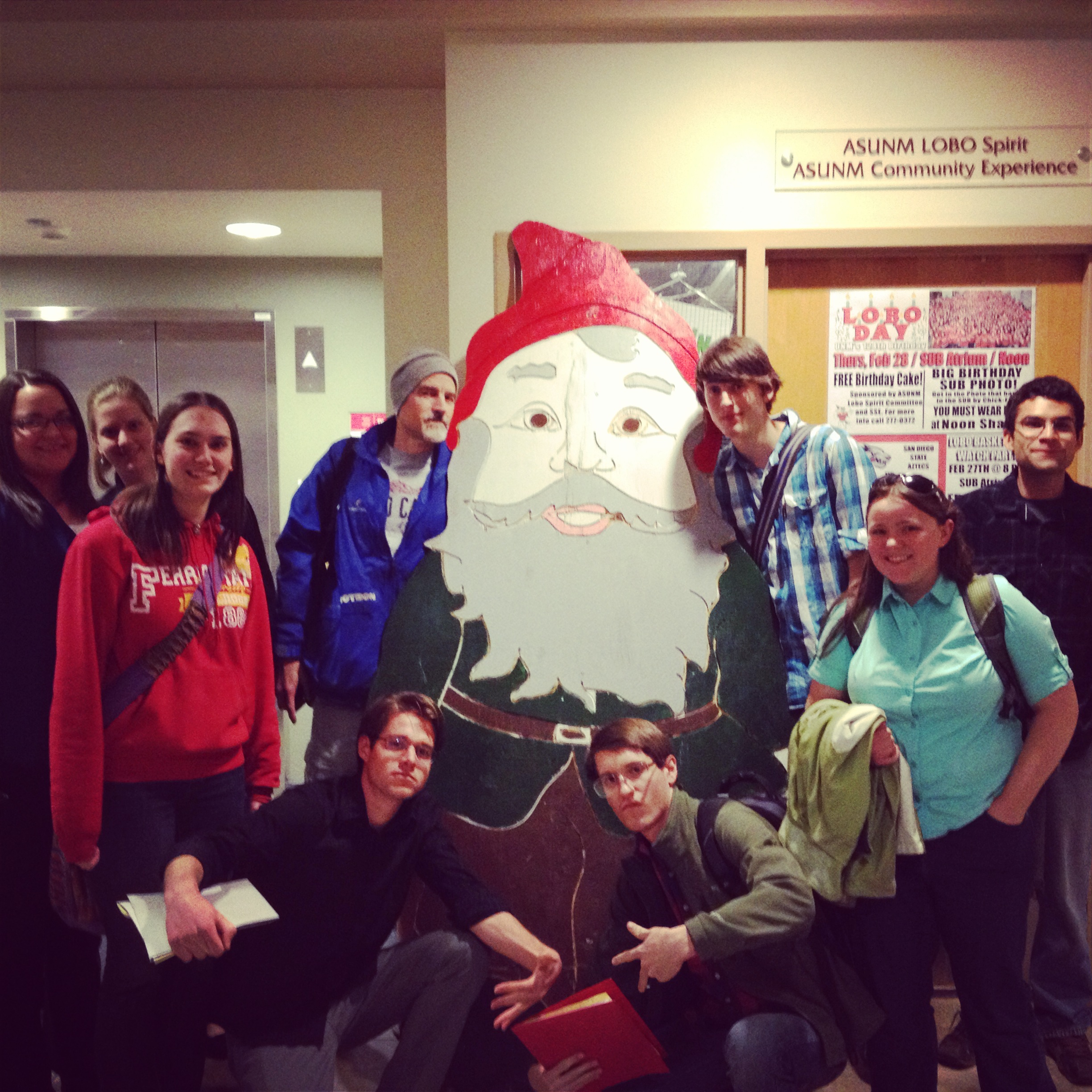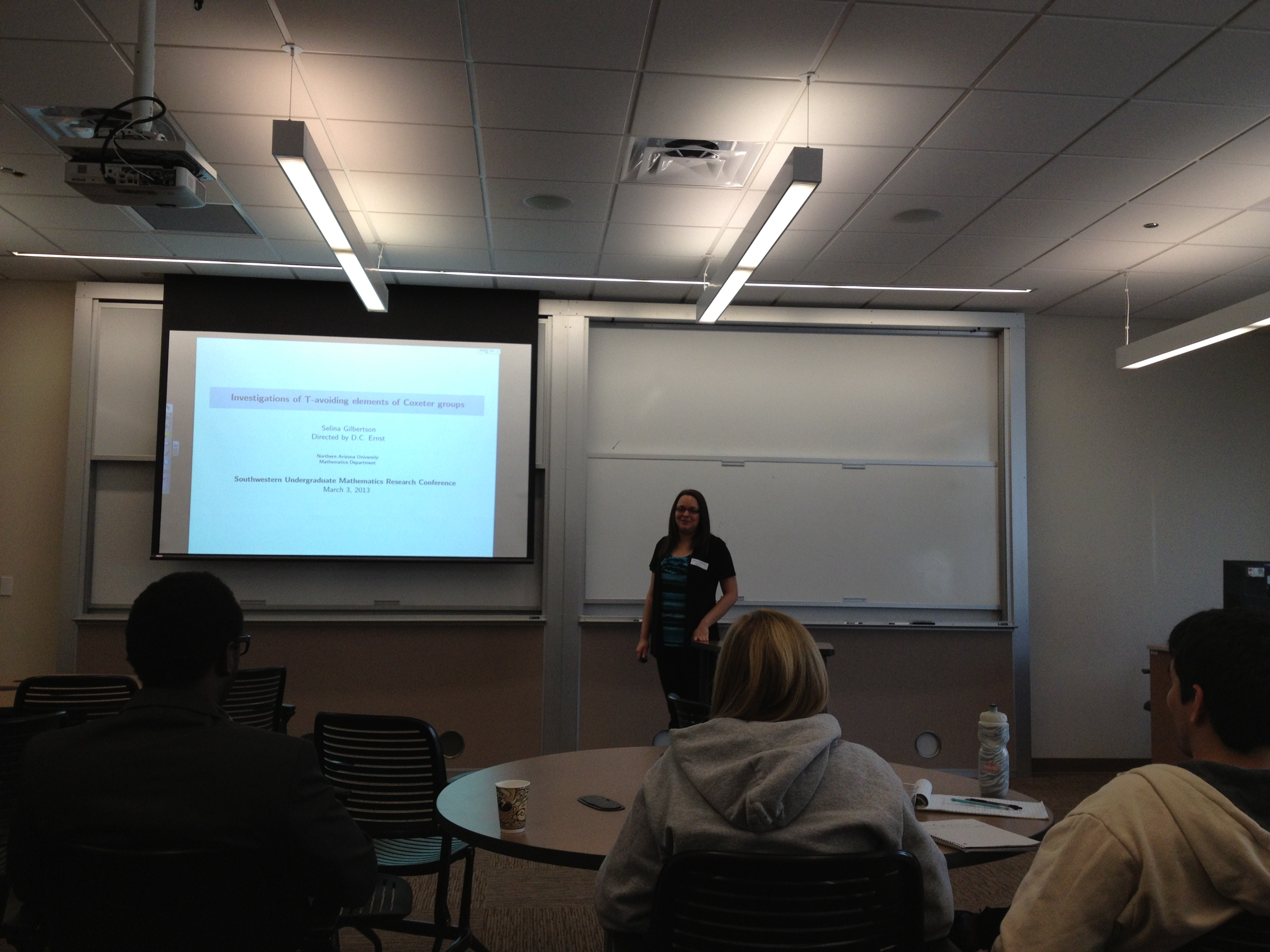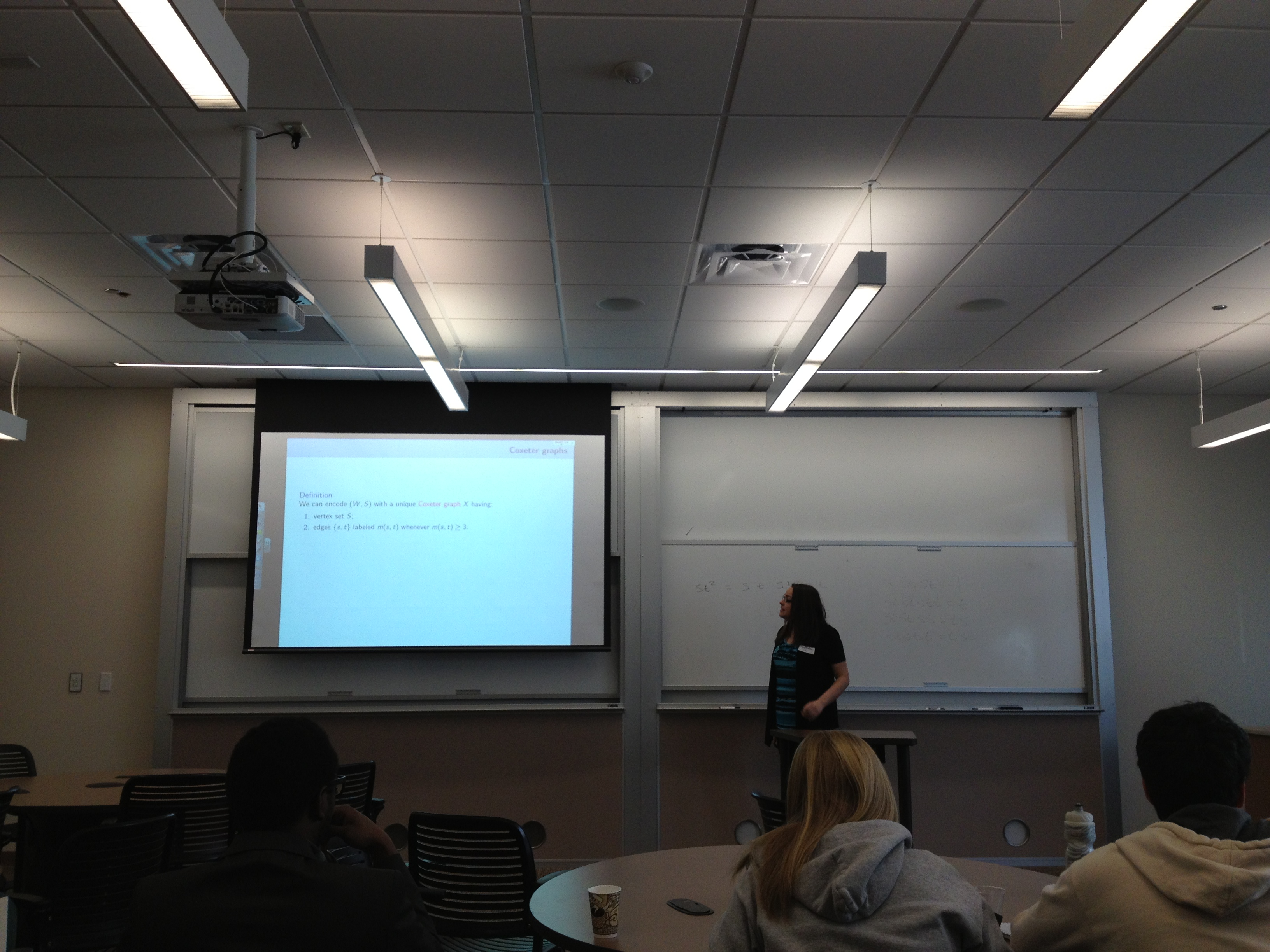SUnMaRC 2013
On March 1-3, Jeff Rushall (he’s the Patrick Stewart-looking guy in the photo above) and I, together with a group of 8 Northern Arizona University mathematics majors, attended the 2013 Southwestern Undergraduate Mathematics Research Conference (SUnMaRC) at the University of New Mexico in Albuquerque. SUnMaRC is an annual conference that provides undergraduates in the Southwest an opportunity to give 20 minute talks in order to showcase the work they have been doing for their undergraduate research projects. Three of the 8 NAU students are currently conducting research projects under my guidance. That’s them in the picture above (taken during a break at the conference).
Two of my students, Dane Jacobson and Michael Woodward, have spent the spring semester studying the mathematics behind Spinpossible, which is a free game that is available for iOS and Android devices. Alternatively, you can just play the game in any modern web browser. The game is played on a 3 by 3 board of scrambled tiles numbered 1 to 9, each of which may be right-side-up or up-side-down. The objective of the game is to return the board to the standard configuration where tiles are arranged in numerical order and right-side-up. This is accomplished by a sequence of “spins”, each of which rotates a rectangular region of the board by 180 degrees. The goal is to minimize the number of spins used. It turns out that the group generated by the set of allowable spins is identical to the symmetry group of the 9 dimensional hyper-cube (equivalently, a Coxeter group of type $B_9$).
In a 2011 paper, Alex Sutherland and Andrew Sutherland (a father and son team) present a number of interesting results about Spinpossible and list a few open problems. You can find the paper here. As a side note, Alex is one of the developers of the game and his father, Andrew, is a mathematics professor at MIT. Using brute-force, the Sutherlands verified that every scrambled board can be solved in at most 9 moves. One of the goals of my students’ research project is to find a short proof of this fact. During their talk at SUnMaRC, Dane and Michael presented their current progress on this unexpectedly difficult problem. Here are their slides.
A week after SUnMaRC, Dane and Michael gave a similar and improved talk (which includes some random images of Samuel L. Jackson) during NAU’s Friday Afternoon Undergraduate Mathematics Seminar (FAMUS). As the name of the seminar suggests, the target audience for the FAMUS talks are undergraduates. You can find the slides for their FAMUS talk here.
My third student, Selina Gilbertson, has spent the spring semester working on extending the results of some of my previous students. During the 2011-2012 academic year, I mentored Ryan Cross, Katie Hills-Kimball, and Christie Quaranta at Plymouth State University on an original research project aimed at exploring the “T-avoiding” elements in Coxeter groups of type $F$. Coxeter groups can be thought of as generalized reflections groups. In particular, a Coxeter group is generated by a set of elements of order two. Every element of a Coxeter group can be written as an expression in the generators, and if the number of generators in an expression is minimal, we say that the expression is reduced. We say that an element $w$ of a Coxeter group is T-avoiding if $w$ does not have a reduced expression beginning or ending with a pair of non-commuting generators. My PSU students successfully classified the T-avoiding elements in the infinite Coxeter group of type $F_5$, as well as the finite Coxeter group of type $F_4$. At the time, we had conjectured that our classification holds more generally for arbitrary $F_n$. However, Selina has recently discovered that this is far from true. In Selina’s SUnMaRC talk, she relayed her current progress on classifying the T-avoiding elements in type $F_n$. Here are her slides.
Both sets of students gave wonderful talks. In fact, all 8 NAU students gave fantastic talks. I was impressed. Below are some photos from our trip.
Dana C. Ernst
Mathematics & Teaching
Northern Arizona University
Flagstaff, AZ
Website
928.523.6852
BlueSky
Instagram
Facebook
Strava
GitHub
arXiv
ResearchGate
LinkedIn
Mendeley
Google Scholar
Impact Story
ORCID
Buy me a coffee
Current Courses
About This Site
This website was created using GitHub Pages and Jekyll together with Twitter Bootstrap.
Unless stated otherwise, content on this site is licensed under a Creative Commons Attribution-Share Alike 4.0 International License.
The views expressed on this site are my own and are not necessarily shared by my employer Northern Arizona University.
The source code is on GitHub.
Land Acknowledgement
Flagstaff and NAU sit at the base of the San Francisco Peaks, on homelands sacred to Native Americans throughout the region. The Peaks, which includes Humphreys Peak (12,633 feet), the highest point in Arizona, have religious significance to several Native American tribes. In particular, the Peaks form the Diné (Navajo) sacred mountain of the west, called Dook'o'oosłííd, which means "the summit that never melts". The Hopi name for the Peaks is Nuva'tukya'ovi, which translates to "place-of-snow-on-the-very-top". The land in the area surrounding Flagstaff is the ancestral homeland of the Hopi, Ndee/Nnēē (Western Apache), Yavapai, A:shiwi (Zuni Pueblo), and Diné (Navajo). We honor their past, present, and future generations, who have lived here for millennia and will forever call this place home.

